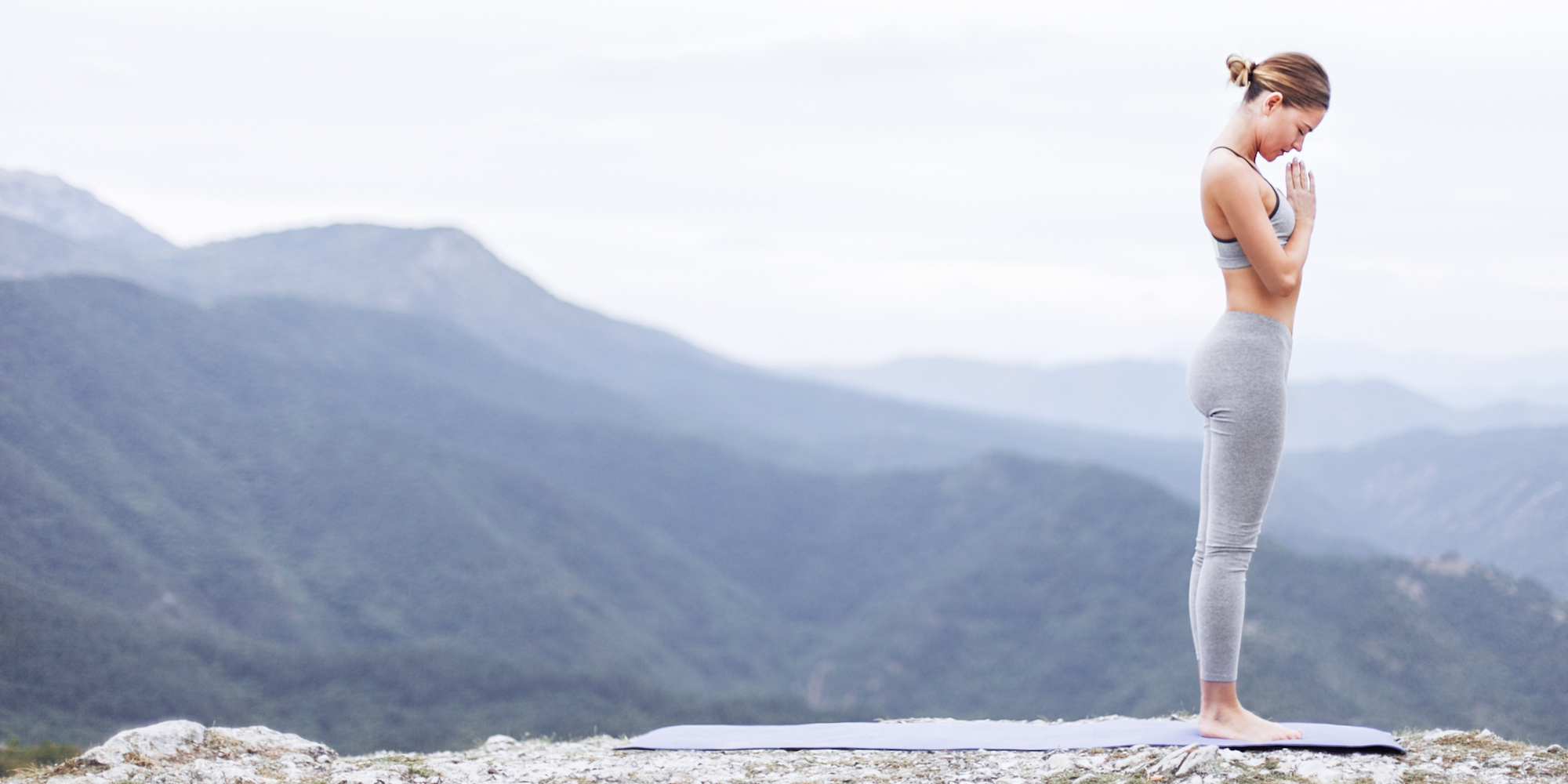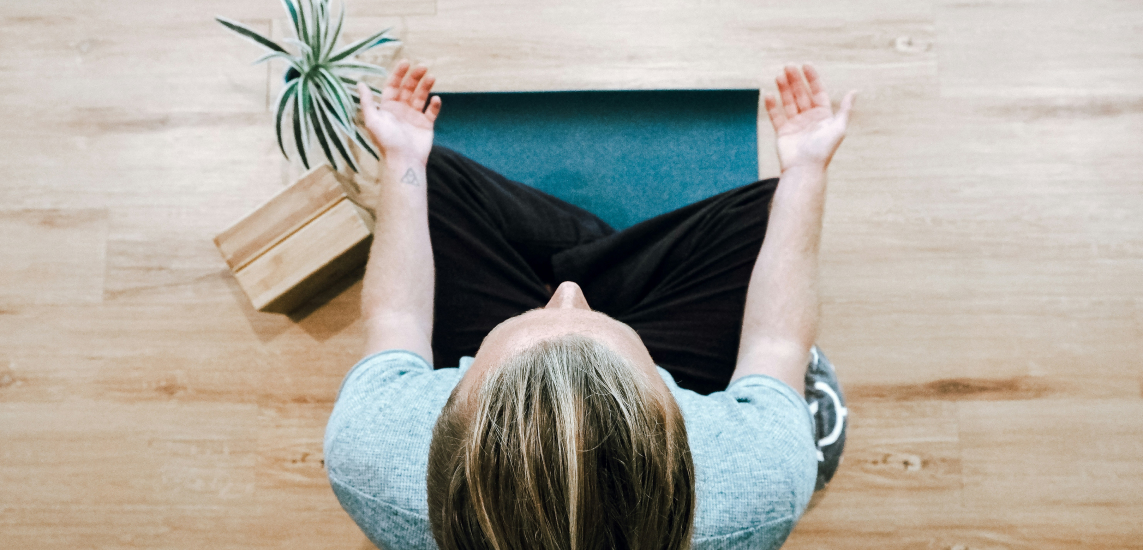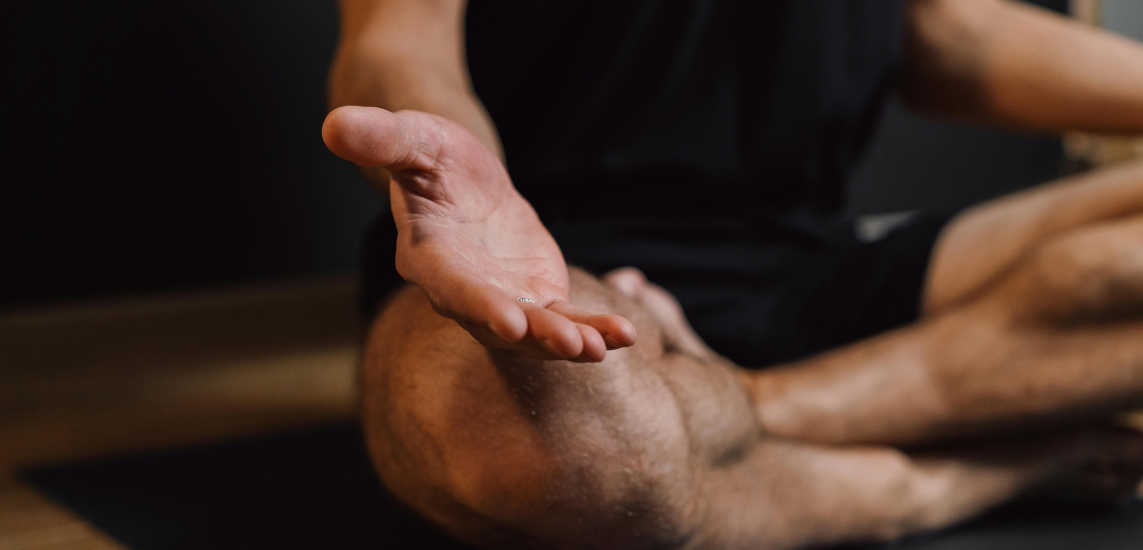No matter how decidedly contemporary our yoga practice is, asanas are rooted in a history that dates back at least to 400 CE, as seen in the first commentaries on the Yoga Sutras. We may come to yoga with an idea that the asana practice will change our physical bodies — and it does. However, at a deeper level, yoga asana is one tool of several inner and outer practices used to move the inner energy of the body, the prana.
While reading, you might want to listen to this soothing instrumental music track for yoga, meditation, and mind relaxation:
- Thoughts and Feelings Sandeep Khurana 14:59
Awakening prana brings us to a deeper awareness and higher levels of consciousness. Ultimately, it brings us to the end goal of yoga, samadhi, the full integration of the practice when union with the divine is achieved.
Read more: Prana can be a tricky thing to understand because it’s unseen. It is, however, felt. Explore what prana is and how to connect to it.
The “divine” is not in this case a self-existent being outside ourselves, but our own true nature. The Yoga Sutra teaches us yoga will end the incessant ruminations of our mind, (Yoga Sutra 1.2) and in the resulting clarity, we’ll be able to see that this divinity is who we already are. (Yoga Sutra 1.3)
And yes, we can get there through asana, but not without awareness.
Bringing Awareness To Our Asana Practice
Asana is just one of eight limbs of yoga described by the Yoga Sutra. Asana is the second, seated between the outer practices of ethics and breath control. It is weighted no more heavily than the inner practices of turning inward, meditation, and contemplation.
While the eight limbs are listed in a certain order, the items on this list do not exist independently from one another. Each is intertwined with the others and they work as a whole. Asana does not work without inner awareness, pratyahara, meditative concentration, dharana, and contemplation, dhyana.
To achieve full integration, samadhi, we must incorporate the inner practices of awareness with the outer practices of movement and breath control.
Awakening Through The Asana Practice
The speed at which our spiritual practice evolves is connected to the depth of our awareness. By intentionally combining inner practices of awareness with asana, we accelerate our awakening.
If you have an asana practice, the following practical guidelines can help you bring greater awareness to it.
Setting An Intention
Awareness begins with intention. Why am I doing yoga? What’s the intent here? Setting an intention is a powerful way to remind ourselves that the asana is not the end goal alone, but the path.
Intention can give the busy mind a place on which to anchor as we move through the movement.
And so what should intention be?
Us contemporary yogis tend to associate the English word “intention” with a goal. In Sanskrit, intention is sankalpa. Sankalpa is less about goal setting, and “what can I get?”, and more about asking, “what do I promise to bring?” Sankalpa is not a goal but a commitment.
Your sankalpa is where you’ll rest your active mind.
Commit to noticing the breath. Commit to witnessing your movement without aversion. Commit to inviting in ease. Commit to staying present. You get to choose.
Awareness Of The Body
As we work with asana to deepen awareness, the most apparent tool we have is the form of the body itself. On a gross level, we begin with attention to the overall form of the body, alignment in the poses, and the shapes themselves.
When we notice sensations in the body, we quickly label them as tightness, weakness, pain, inability, and failure. On a good day, sensations get labeled as strength, ability, progress, spaciousness or joy.
Through awareness, we recognize that each sensation is simply a play of energy. The label we give it has infinite potential — and it’s up to us.
Remember, when working with the form of the body, no one form is needed. Awareness in savasana or child’s pose is no better or worse than awareness arrived at in handstand.
Read more: Explore how yoga therapy can individually activate self-healing powers to overcome pain, tension and anxiety.
Awareness Of The Breath
The breath is an excellent tool to work with because it is always with us. The breath is like an arrow pointing the mind to the body and vice versa. It’s easy for us to slip into our asana practice, (days and lifetimes) distant from our bodies. Checking in with the breath can help show us what’s going on.
Is the breath short, shallow, forced, or are you not steadily breathing at all? Not only is the breath a reflection of what’s going on in your body, but it’s a reflection of what’s going on in our mind.
We can bring the body and mind back to a state of ease in asana by bringing the breath back to a state of ease.
We can improve physical balance by breathing steadily.
Breath is intimately connected to prana. We can accelerate the effectiveness of asana by maintaining awareness of the breath. The 15th century Hatha Yoga Pradipika reminds us that “(s)he who has gained control of the breath, shall also gain control of the abilities of the mind.”
Awareness Of The Mind
We use body and breath awareness to reign in our overactive minds, but remembering all are interconnected, we can work awareness from the angle of the mind itself. A great place to begin is by asking if we’re at all present with the breath and body, with sankalpa, or if the mind has gone somewhere else.
Just as in a seated meditation practice, we can employ awareness to continually check in with where the mind is in our asana practice. Is the mind in the studio (or yoga corner at home) still? On our mats? In our bodies? Sankalpa gives us an anchor point to return to. What was our intention again?
As we notice, witness, and watch our asana practice, what is the quality of this noticing? Are we grasping to pleasant sensations, perfect alignment, steady balance, praise? Are we avoiding certain poses, sensations or feelings?
Ideally, our noticing is as open and spacious as we want our physical bodies and our minds to be.
Read more: Learn how the feeling of discomfort—in yoga, meditation and life in general—is an important aspect of personal and spiritual growth.
Dedication
At the close of our asana practice, we have an opportunity for dedication. This too is a tool in strengthening our awareness as we consciously recognize our practice and the work we’ve done. Before getting up and walking away, by spending some time noticing the effects of the asana on body, breath, and mind, we strengthen these effects.
By dedicating these benefits not only to ourselves but to others, we further hasten the journey toward samadhi.
Read more: Elliott Dacher explains his understanding of going beyond “Meditation 1.0” and how meditators shift their awareness from an object to the subject itself.
Complete Union Of The Asana Practice & Awareness
In asana practice — with intention as our guide —, we use the poses and the movement to learn stillness. We get better at holding stillness in the body and the mind. Through awareness of the body and the shape it’s making, we develop an awareness of the mind and the state it’s in.
Just as a seated meditation practice places space between our identification with thoughts and awareness of thoughts, so does our asana practice place space between identification with the body and awareness of the body.
The Yoga Sutra teaches that it’s our misguided identification with the body and self that’s the root of all our pain and hardships. Asana uses the body to help us become free from it. When we no longer identify with the small self in our bodies, we’re free to identify with the entirety of the world and the beings around us.
Explore thousands of free guided Yogic practices to connect to the spiritual through control of the mind, body and senses.



-1.jpg)



